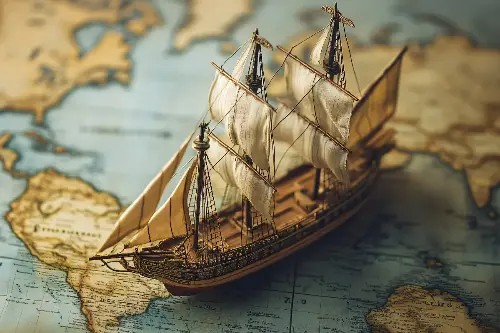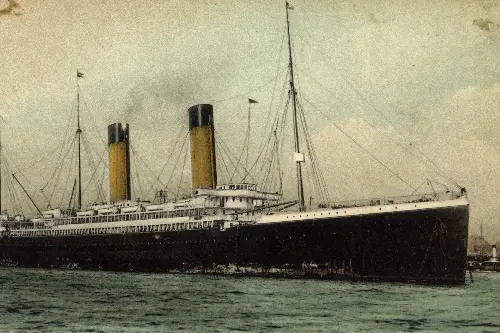The origins of sea travel trace back to ancient civilisations, where the simplest rafts and dugout canoes were the precursors to the colossal cruise ships that grace our oceans today. Early humans quickly realised that waterways offered fertile opportunities for trade, travel, and exploration. Communities living by rivers, lakes, and coastlines began crafting vessels from hollowed trees, stitching together reeds or inflating animal skins. As these skill sets developed, the Egyptians and Phoenicians started building larger boats, navigating by the sun and stars. These civilisations fostered advancements in navigation and shipbuilding that enabled them to voyage across the Mediterranean and the Red Sea, planting the seeds of the intricate web of sea routes that would span the globe.

The Age of Sail: Wind-Powered Wonders and the Race for Colonies
From the 16th to the mid-19th centuries, the Age of Sail saw European nations pushing the envelope of oceanic exploration. The invention of the lateen sail and the sternpost rudder during the Medieval period had revolutionised maritime travel, making vessels faster and more manoeuvrable. Countries like Spain, Portugal, England, and the Netherlands built vast fleets of galleons, caravels, and frigates, voyaging to uncharted territories and establishing trade routes. This era of discovery was not without its dark side, as it also facilitated the colonial conquest and exploitation of distant lands, and the grim trading of enslaved people.
Steam Power and the New Age of Speed
The advent of the steamship in the 19th century opened a new chapter in sea travel, drastically reducing travel times and the dependency on unpredictable winds. The famous SS Great Britain, designed by Isambard Kingdom Brunel, was a pioneer in this transition. With the ability to carry more passengers and cargo, steamships became the backbone of international trade and passenger travel. As the 20th century approached, the competition to build grander, faster and more luxurious ships led to icons such as the Titanic, whose tragic maiden voyage in 1912 remains a haunting reminder of the perils at sea despite technological progress.

The Birth of Leisure Cruising
While sea travel was primarily focused on transportation and trade, its potential for leisure and tourism wasn't realised until the late 19th and early 20th centuries. The concept of cruising for pleasure began to take shape with ships like the Prinzessin Victoria Luise, the first purpose-built cruise ship, setting the tone for future leisure voyages. It wasn't long before cruise lines like Cunard and White Star Line started offering luxury voyages to exotic destinations. By the mid-20th century, cruising had cemented its place in the travel industry, combining the allure of the sea with the opulence and comfort of floating hotels.
The Modern Marvels of Cruise Liners
Today, the evolution of sea travel has reached a pinnacle in modern cruise liners. Ships such as Royal Caribbean's Symphony of the Seas boast awe-inspiring size and amenities, from multiple pools, water slides, and theatres to shopping malls and restaurants serving international cuisine. The industry has adapted to modern demands with eco-friendly technologies and sustainable practices, recognising the importance of preserving our oceans. Moreover, the addition of educational programmes and expeditions on cruise ships align with a growing trend for enriching travel experiences, marrying leisure with learning.

Preserving a Rich Seafaring Heritage
In preserving the narrative of sea travel, we pay homage to the ingenuity of ancient mariners, the daring of explorers, and the craftsmanship of shipbuilders throughout history. Museums dedicated to maritime history, restored historic ships that can be visited, and re-enactments of legendary voyages all play a part in keeping the spirit of seafaring alive. As we reflect on the significant advances made over millennia, the romance of journeying across the seas continues to capture imaginations and inspires us to explore beyond the horizon.
Sailing forward, we recognise that the evolution of sea travel mirrors humanity's own journey — marked by curiosity, innovation, and an insatiable desire to connect with distant shores. From its humble beginnings to its role in shaping globalisation, sea travel has provided us with a legacy of stories, lessons, and an understanding of our interconnected world. Whether one sails for adventure, commerce, or leisure, the call of the ocean remains as compelling as ever, stirring in us the same wanderlust that spurred our ancestors to embark upon the vast, blue expanse.
